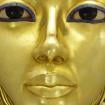
A History Of Egyptian Antiquities: Assessing Pivotal Highs And Lows Down The Centuries
Following the culmination of the Anglo-Egyptian War in 1882, the British used their experiences in colonizing the Indian subcontinent to tackle the geo-political scenario in Egypt, opening the country to Western influences.

Anglo-Egyptian War. The Illustrated London News, Saturday, July 29, 1882. (Public Domain)
England’s Industrial Revolution spawned a huge market for imported commodities and raw materials, leading to immense investment opportunities in Egypt. The country became a favored market as it was a closer destination than India and the Far East. Unlike India, Egypt was a far more cosmopolitan world, inhabited by Levantines and Europeans of many nationalities including Greeks and Italians.
To boost the production of cotton and enhance Egypt’s overall agricultural productivity, the British constructed the Aswan Low Dam with a view to harness the raw power of the raging Nile during its annual inundation.

Portrait of Sir William Willcocks, British civil engineer, who proposed and built the first Aswan Dam. The World’s Work, 1914. (Public Domain)
Rapid, All-Round Changes
Spearheaded by the India-born British civil engineer, Sir William Willcocks, the construction of the Aswan Low Dam, one of the largest masonry dam projects of its kind, began in 1898 and was completed in 1902. Marginally reducing flood levels, the dam increased irrigation, especially to cotton fields in the entire valley, supposedly adding one million more acres of cropland.

A stereograph showing local boys spinning cotton, Egypt. 1905. Boston Public Library. (Public Domain)
Already at the behest of the new Turkish viceroy of Egypt, Mohamed Sa’id Pasha, the visionary French diplomat Ferdinand-Marie, Vicomte De Lesseps had constructed the Suez Canal across the Isthmus of Suez. Beginning a decade of work in 1859, the mammoth project joined the Mediterranean and Red Sea, substantially reducing sailing distances between Europe and East Asia. In 1875 the British government, on the initiative of Prime Minister Benjamin Disraeli, purchased Khedive Isma’il’s Suez Canal shares to make Britain the largest shareholder.
Like this Preview and want to read on? You can! JOIN US THERE ( with easy, instant access ) and see what you’re missing!! All Premium articles are available in full, with immediate access.
For the price of a cup of coffee, you get this and all the other great benefits at Ancient Origins Premium. And - each time you support AO Premium, you support independent thought and writing.
Independent researcher and playwright Anand N. Balaji, is an Ancient Origins guest writer and author of Seeking Smenkhkare.
Top Image: The Colossi of Memnon on the Theban West Bank. Antonio Beato. Brooklyn Museum. (Public Domain); An 18th century apothecary vessel with the inscription MUMIA. Deutsches Apothekenmuseum Heidelberg (Public Domain); Amy, Flinders Petrie's sister-in-law, buying antiquities at Abydos, circa 1899. © The Petrie Museum of Egyptian Archaeology, UCL, London. (Osama Shukir Muhammed Amin / CC BY-SA 4.0); One of the dahabeahs of Thomas Cook & Son, (Egypt) Ltd. Brooklyn Museum Libraries. Wilbour Library of Egyptology. (Junghaendel, R. M./Public Domain); Wall relief from the mortuary temple of Pharaoh Seti I at Abydos. Brooklyn Museum (Public Domain) Collage design by Anand N. Balaji ; Deriv.
By: Anand N. Balaji















